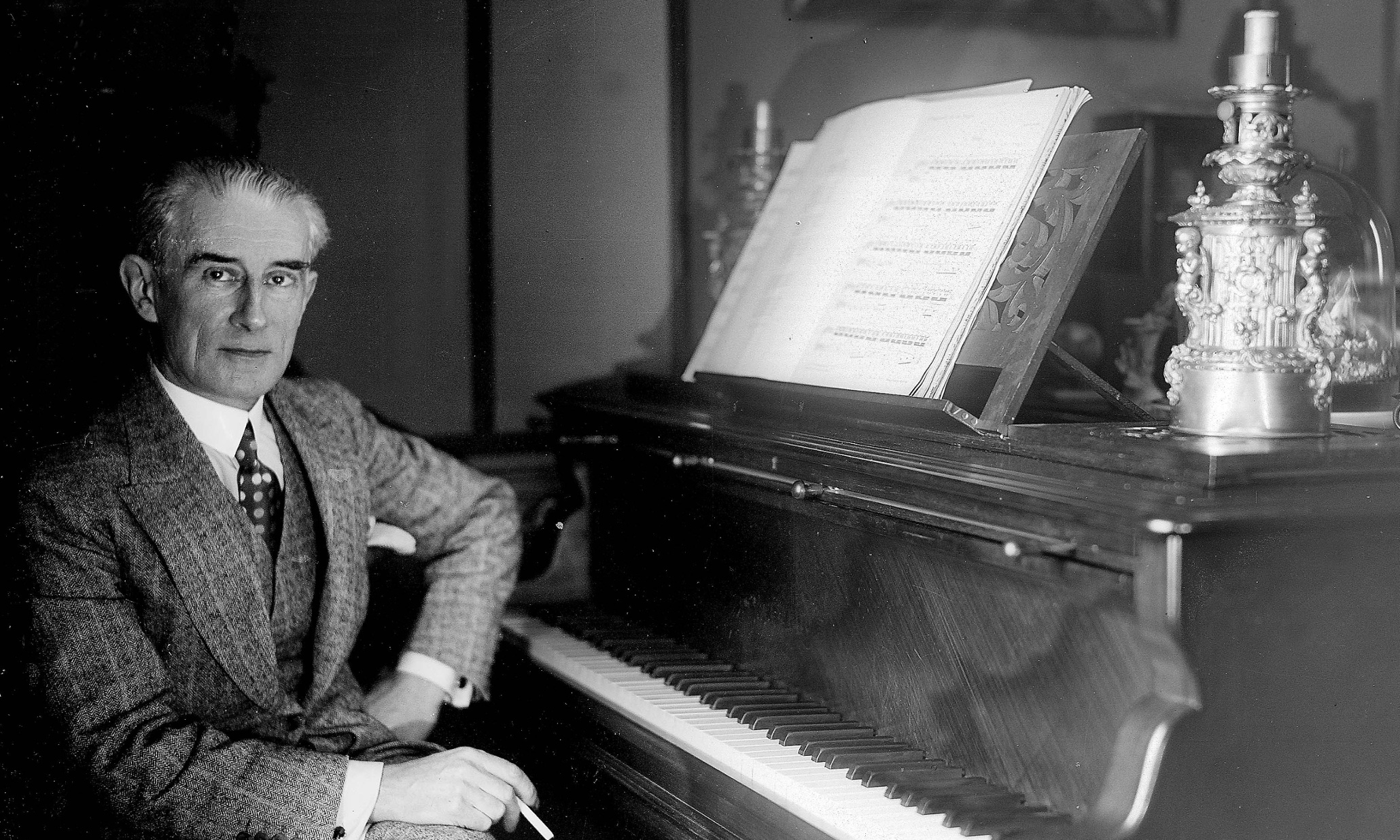Listening to Maurice Ravel’s Le Tombeau de Couperin, it’s easy to get a sense of altered reality. Outwardly, the original six movement suite, written for solo piano, responds to the horrors and devastation of the First World War, a conflict Ravel experienced first hand as a military ambulance driver. Ravel dedicated each movement of the work, written between 1914 and 1917, to the memory of a friend lost on the battlefield.
But, interestingly, we don’t hear the anguish of war in Ravel’s music. There isn’t a hint of the hellish fury of Shostakovich’s wartime symphonies or the dazed shell shock and bleak desolation of Vaughan Williams’ “Pastoral” Symphony. Instead, Le Tombeau de Couperin escapes into an almost childlike world of color and joyful, elegant ambivalence. Like so much of Ravel’s music, there is a sense of detachment which seems to open the door to ultimate, yet indescribable truth. Some critics complained that the music was not sombre enough for its subject matter, to which Ravel replied, “The dead are sad enough, in their eternal silence.”
Through its hazy, impressionistic prism, Le Tombeau de Couperin also evokes voices of the distant past. Its title references the French Baroque composer François Couperin (1668-1733). In the seventeenth century, Tombeau, which translates literally as “tomb,” referred to “a piece written as a memorial.” Ravel intended to pay homage not only to Couperin, but to the style and ambiance of eighteenth century French keyboard suites. The movements are based on popular Baroque dances. Listen to the rhythm and structure of this Forlane by François Couperin and compare it to Ravel’s Forlane below.
Le Tombeau de Couperin was originally written as a six movement solo keyboard suite. (Listen to Louis Lortie’s excellent performance here). Two years after its completion, Ravel orchestrated the suite, eliminating two movements (the Fugue and the Toccata). Listening to the piano score, the jazzy sophistication of Ravel’s harmonies come across with striking brilliance. But it’s in the final, orchestrated version where the music blossoms with new life through a rich array of colors. The instruments, with their distinct personas, engage in musical conversations and the tonal colors mix in magical new ways.
From the bubbly opening of the Prélude, there’s a dreamlike and illusory quality about the music. It doesn’t go where we expect, and just when we think we’ve arrived at a climax, something firm that we can hold onto, the music dissolves, like a mirage. Throughout the piece, there’s a sense of joy in the rhythm. In the Forlane, notice the buoyant, dance-like quality of the music, especially in the passage beginning at 1:10. The closing Rigaudon is full of jokes and surprises. As in the first movement, we’re pulled in new, unexpected directions.
For me, the Menuet evokes serene beauty, but also a touch of sadness. As the oboe makes its opening statement, listen to the changing colors around this solo voice. Notice the velvety bed of strings, which enters at the end of the first phrase and then passes us along to the next phrase (0:05). Listen carefully to the sudden change of color and parallel harmony beginning at 1:47. I love the way this darker, veiled new world dissolves effortlessly back into the opening theme. At the end of the Menuet, the music pauses at a climactic moment of shimmering sensuality and repose (3:52) before being cut off by the innocent, childlike “laugh” of the woodwind voices, which seem to be saying, “Come on, let’s go.” The final chord fades into a jazzy dreamscape.
One of my favorite recordings of this piece is Charles Dutoit’s 1990 CD with the Montreal Symphony:
1. Prélude:
2. Forlane:
3. Menuet:
4. Rigaudon:


Well-written, Tim. Your words are almost as beautiful as the music.
Thank you for your kind words, Sherill. Writing about such great music is always a challenge!
Sadly, the videos are unavailable. Maybe I live in the wrong region. Luckily, I can find some recordings on YouTube myself.
Sincerely,
Peter
Sorry to hear that, Peter. I recommend that you check out this recording via iTunes or Amazon.